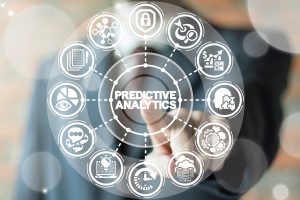New IoT systems help monitor the health of beehives to help ensure the security of the world’s food supply.

Image: iStock
Saturday, Aug. 15, marks National Honey Bee Day 2020 and reminds us that maintaining healthy bee colonies is of vital importance. Honey bees are critical pollinators, and if they were to die off, it’s likely to be catastrophic for human beings.
SEE: Report: SMB’s unprepared to tackle data privacy (TechRepublic Premium)
The US Department of Agriculture is referenced in the recently gathered data and explains that one out of every four bites of food depends on bee pollination, and the US Geological Survey states that 75% of the fruits, nuts, and vegetables produced in the US are pollinated by bees. However, it’s become increasingly difficult to maintain healthy bee colonies, and the loss of colonies are at record levels, according to new data compiled for the SAS Global Forum 2020.
It may be fascinating to observe beekeepers in the traditional full-face and body gear, but it’s also time-consuming as they manually keep track of each hive. Beekeepers ensure the queen bee is well while looking for potential problems that need fixing.
Internet of Things (IoT)-enabled beehives use streaming analytics to assist beekeepers as they track their hives’ health. New SAS analytics makes real-time data signals easier to understand so effective interventions can take place, which is critical in helping the plight of endangered honey bees, and how that directly relates to the global state of the food supply chain.
SEE: Navigating data privacy (free PDF) (TechRepublic)
“SAS’ passion for innovation and sustainability helped us find technology solutions to better understand the health of beehives,” said Sarah Myers, agtech marketing manager at SAS. “I’m an avid beekeeper, and it’s exciting to work with a group of data scientists who want to find new ways to support this critical global effort.”
Tracking the health of beehives
Hive data is gathered from the SAS IoT-enabled beehives, which use streaming analytics to assess and interpret hive data, identifying which units need assistance.
When the hive data is shared to the cloud, data scientists are able to monitor the continuous measurement of the following:
-
Weight. If a hive is healthy, it produces honey and gains weight. A beekeeper can intervene when the scale identifies weight loss or a weight difference from hive to hive.
-
Temperature and humidity. The queen needs to be warm enough to survive winter and reside in an ideal climate within a hive to keep her cozy and create baby bees. When honey bees move, flap their wings, and cluster, they regulate potential high temperature and humidity. Concerning fluctuations are revealed through the data collection of temperature and humidity
-
Acoustics. SAS hives monitor audio data continually, and machine-learning models are used to listen for anomalies. Honey bees’ distinctive buzz indicates the hive’s health, stress-level, swarms, and the queen’s condition. Previous attempts to gather acoustic data had not been entirely successful–it was a challenge, with thousands of busy bees in an array of time-varying tasks, as well as ambient sound from birds, crickets, cars, trains, and other sources. The development of a bioacoustic monitoring system has made great strides.
-
Flight activity. When bees fly in and out of a hive it indicates foraging activity, which is a sign the hive is healthy. Computer vision technology applied to the flight pattern of the bees helps beekeepers understand when and if the hive is in trouble or happy.
With one queen to each hive, her life is invaluable, but if she is failing or missing manual detection, it not only disrupts the hive but is time consuming. Sensor technology helps beekeepers monitor hives, essential to maintaining the cyclical balance of the world’s food supply.
Also see
Source of Article




